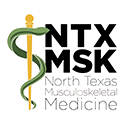Better Health Through Smarter Supplements: Deep Dive into NAC
This blog in our series will continue with my six recommended supplements for Foundational Health and take a deep dive into NAC, one of our body’s most powerful antioxidants. Curious why? I break it all down in this week’s blog post — including how to use each one safely and effectively.

